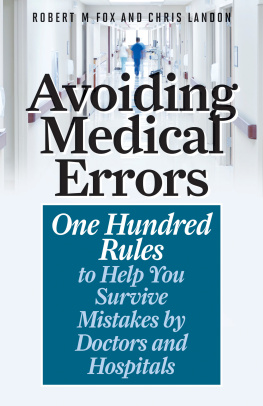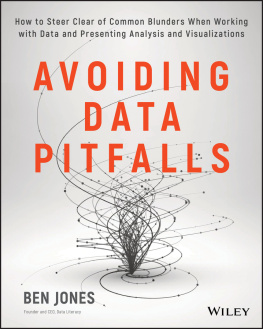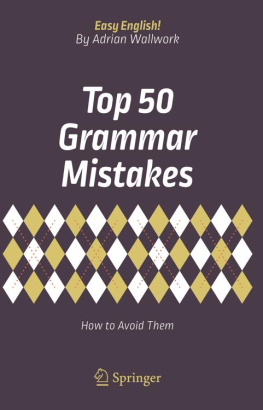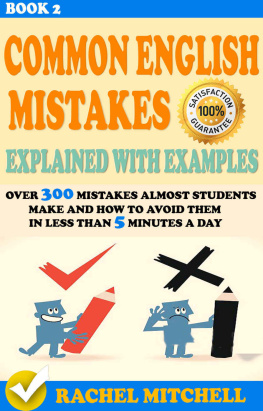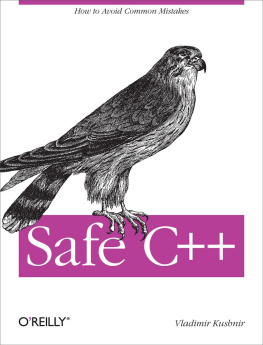To Davy Harsanyi: Keep being the person you are, little brother; the stars are your limit.
Mlissa, ma puce.
front matter
preface
In 2019, I started my second professional experience with Go as the primary language. While working in this new context, I noticed some common patterns regarding Go coding mistakes. I started to think that perhaps writing about these frequent mistakes could help some developers.
So, I wrote a blog post called The Top 10 Most Common Mistakes Ive Seen in Go Projects. The post was very popular: it had more than 100,000 reads and was selected by the Golang Weekly newsletter as one of the top articles of 2019. Beyond that, I was pleased with the positive feedback I got from the Go community.
From that moment, I realized that communicating about common mistakes was a powerful tool. Accompanied by concrete examples, it can help people learn new skills efficiently and facilitate remembering the context of a mistake and how to avoid it.
I spent about a year compiling mistakes from various sources such as other professional projects, open source repositories, books, blogs, studies, and discussions with the Go community. To be transparent, I was also a decent source of inspiration regarding mistakes.
At the end of 2020, I reached 100 Go mistakes, which seemed to me like the right moment to propose my idea to a publisher. I contacted only one: Manning. I saw Manning as a top-level company known for publishing high-quality books, and to me, it was the perfect partner. It took me almost 2 years and countless iterations to frame each of the 100 mistakes alongside meaningful examples and multiple solutions where context is key.
I hope this book will help you avoid making these common mistakes and help you enhance your proficiency in the Go language.
acknowledgments
I want to thank a number of people. My parents, for pushing me when I was in a complete failure situation during my studies. My uncle Jean-Paul Demont, for helping me find the light. Pierre Gautier, for being a great source of inspiration and making me trust myself. Damien Chambon, for steadily setting the bar higher and pushing me to get better. Laurent Bernard, for being a role model and teaching me that soft skills and communication are crucial. Valentin Deleplace, for the consistency of his exceptional feedback. Doug Rudder, for teaching me the delicate art of conveying ideas in a written form. Tiffany Taylor and Katie Tennant, for the high-quality copy editing and proofreading, and Tim van Deurzen, for the depth and the quality of his technical review.
I also want to thank, Clara Chambon, my beloved little goddaughter; Virginie Chambon, the nicest person alive; the whole Harsanyi family; Afroditi Katika, my favorite PO; Sergio Garcez and Kasper Bentsen, two amazing engineers; and the entire Go community.
Lastly, I would like to thank the reviewers: Adam Wanadamaiken, Alessandro Campeis, Allen Gooch, Andres Sacco, Anupam Sengupta, Borko Djurkovic, Brad Horrocks, Camal Cakar, Charles M. Shelton, Chris Allan, Clifford Thurber, Cosimo Damiano Prete, David Cronkite, David Jacobs, David Moravec, Francis Setash, Gianluigi Spagnuolo, Giuseppe Maxia, Hiroyuki Musha, James Bishop, Jerome Meyer, Joel Holmes, Jonathan R. Choate, Jort Rodenburg, Keith Kim, Kevin Liao, Lev Veyde, Martin Dehnert, Matt Welke, Neeraj Shah, Oscar Utbult, Peiti Li, Philipp Janertq, Robert Wenner, Ryan Burrowsq, Ryan Huber, Sanket Naik, Satadru Roy, Shon D. Vick, Thad Meyer, and Vadim Turkov. Your suggestions helped make this a better book.
about this book
100 Go Mistakes and How to Avoid Them contains 100 common mistakes made by Go developers when working with various aspects of the language. It focuses heavily on the core language and the standard library, not external libraries or frameworks. The discussions of most of the mistakes are accompanied by concrete examples to illustrate when we are likely to make such errors. Its not a dogmatic book: each solution is detailed to convey the context in which it should apply.
Who should read this book
This book is for developers with existing knowledge of the Go language. It doesnt review basic concepts such as syntax or keywords. Ideally, you have already worked on an existing Go project at work or home. But before delving into most topics, we make sure the foundations are clear.
How this book is organized: A roadmap
100 Go Mistakes and How to Avoid Them consists of 12 chapters:
Chapter 1, Go: Simple to learn but hard to master, describes why despite being considered a simple language, Go isnt easy to master. It also shows the different types of mistakes we cover in the book.




